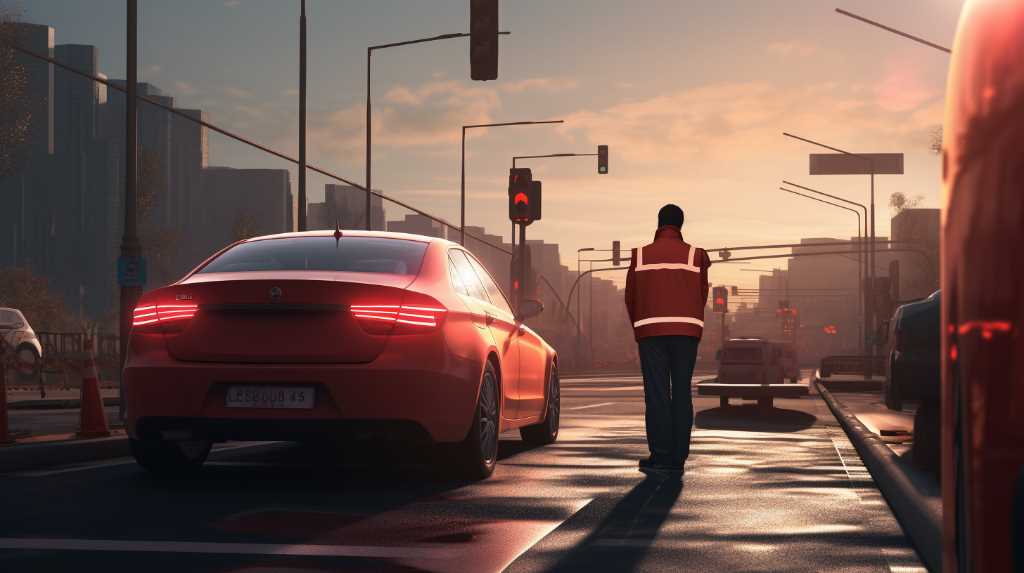
If you’ve been in a car accident, it’s important to check if your car is still safe to drive. You should look at the damage you can see and also consider any problems that might not be obvious.
It’s important because driving an unsafe car can be dangerous and against the law. Sometimes the law says you can’t drive a car if it’s too damaged. It’s a good idea to get a professional to look at your car to make sure everything is okay.
Right after a crash, you need to think about safety and following the rules. Then you can decide if you should keep driving your car or find another way to get around.
This guide will help you understand what to do with your car after an accident.
Assessing Visible Damage
If you’ve been in an accident, it’s important to quickly check your car for any obvious damage to see if it’s safe to drive. Start by looking over the car’s main structure to make sure the frame and body are not bent or twisted.
Then, take a close look at important safety parts like the brakes, tires, headlights, and steering to ensure they haven’t been damaged and are still working properly. While scratches or dents might not seem as critical, they shouldn’t distract you from checking these key areas first.
It’s a good idea to take pictures or write down what’s wrong with the car as this can help with your insurance and fixing the car later on.
The main reason for doing this check is to find and fix any issues that could make the car unsafe or unreliable before you drive it again.
Understanding Hidden Risks
Even a thorough visual inspection can miss certain internal damages, which may pose significant risks to vehicle operation and safety. Post-accident, vehicles may harbor latent issues such as compromised structural integrity, electrical system malfunctions, or fluid leaks that are not immediately evident.
Analytical assessment of a vehicle’s mechanical components—like the suspension system, steering components, and brake operation—is imperative to ascertain their functionality post-impact. Technical diagnostics, such as error code scanning, can reveal problems with sensors and onboard computers that manual inspections cannot.
Objective evaluation by a certified automotive technician is crucial to identify and mitigate these hidden risks. Failure to address such concealed damages can lead to unpredictable vehicle behavior or failure, endangering the driver and others on the road.
Legal Considerations Post-Accident
After a car accident, drivers need to check how much their car is damaged and understand the legal rules about when a car is safe to drive. Different places have their own rules about what makes a car safe, and drivers must follow these rules to avoid fines, points on their license, or losing the right to drive.
It’s also important to know that if you drive your car after an accident without fixing it properly or getting the okay from the authorities, your insurance might not pay for any new damage. This could mean you’ll have to pay for any more accidents out of your own pocket.
Let’s say you’re in an accident and your car’s front light is broken. Your area might have a law that says cars need two working front lights. So, you’d need to fix that light before you can drive again, or you could get fined. Plus, if you don’t fix it and something happens, your insurance company might not help with the costs.
Always check your local laws and talk to your insurance company after an accident to avoid these problems.
The Role of Professional Inspections
Having your car checked by a professional after an accident is very important to make sure it’s safe to drive. Trained mechanics do this check-up. They look carefully at the car’s structure, like the frame, and parts that make the car move and stop, such as the engine, tires, and brakes. They’re looking for any problems that could make the car unsafe.
They write a detailed report about what they find, explaining what needs to be fixed for the car to be safe again. This report is important because it lets the car owner know about any dangers of driving the car as it is. It’s also used for insurance claims and might be used in court.
That’s why these professional checks are so important for car safety after an accident.
Immediate Steps After a Collision
After a car crash, it’s important to quickly check your car to see if it’s still safe to drive. Start by looking over the car’s main structure to make sure the frame and axles aren’t bent or out of place.
It’s also key to make sure that the airbags and seat belts are still working to keep you safe if you have another accident. You should also check that the brakes, steering, lights, and tires are all in good working order.
Pay close attention to any leaks of fuel, oil, or brake fluid, as these can be dangerous and cause more problems for your car. If you find any serious damage, it’s best not to drive the car until it’s been fixed by a professional.
Conclusion
After a car accident, deciding whether to keep driving your car is a big decision. You need to really look at both the damage you can see and the damage you can’t. It’s important to follow the law and get your car checked out by a mechanic.
What you do right after the crash is important for keeping safe and following the rules. When you’re thinking about if your car is safe to drive, make sure you’re basing your decision on a thorough check-up of the car, so you know it won’t break down on you or be unsafe.